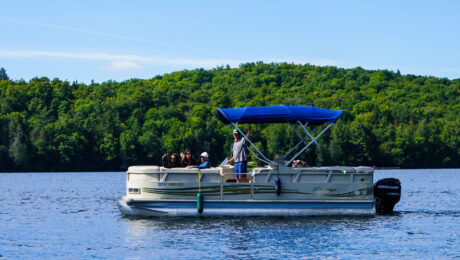The galley is a bustling location inside your vessel, whether you’re just heating water for tea or fileting a freshly-caught fish. Hidden in drawers or on shelves are canned goods, coffee, tea, beans, rice, and pasta, along with an exact number of forks, knives, and spoons. Innovation and design have revolutionized the galley, empowering sailors to prepare food more efficiently and safely atop gimbal stoves despite the constant movement of the boat.
These stoves most commonly utilize propane, which greatly eases mealtime tasks. However, general knowledge of propane safety is essential in ensuring your vessel and everyone aboard stay protected.
Always keep in mind that stoves and propane heaters can unexpectedly create an unplanned hazard or unsafe passage. Gas is heavier than air, so any escaped propane will accumulate in the bilge, creating a dangerous situation. The best way to protect against potential losses from propane-powered vessel components is to have the boat's propane system inspected every so often by a certified ABYC marine technician or to undergo a marine survey every handful of years.
The American Boat & Yacht Council (ABYC) has specific published standards for propane safety and cooking appliances aboard recreational vessels.
Location, configuration, and storage of propane tanks are the key elements of these standards.
Fortunately, there are a few basic things a boat owner can do for their own protection and peace of mind in-between professional inspections. Here is a checklist to keep handy with you when reviewing your propane systems:
- Is there a propane cylinder storage configured to ABYC in a designated storage locker?
- Does the propane storage cylinder incorporate a pressure check valve, and does it have hatches that open to the atmosphere (not sideways)?
- Is there a drain at the bottom of the storage locker that leads overboard so that escaping gas does not accumulate in the bilge or enter the cabin?
- Inspect all connections leading from the propane cylinders to the appliances (i.e. stove, cabin heaters). Ensure there are no cracks or breaks.
- Does any connection from a propane cylinder to an onboard appliance have a break? All connections should be labeled as underwriting laboratory approved with the use of UL rubber marine grade hose or copper pipes.
- Is the locker lined with corrosion-resistant materials? Fun fact: Fiberglass is perfect for this, therefore many manufacturers actually incorporate a designated propane locker as part of the boat's stern lazarette.
- Does the manual valve atop the storage cylinder close when the stove or heater is not in use?
- Have the solenoids (remote shutoffs) corroded at all? Solenoids are fairly reliable but can be susceptible to corrosion, so along with the rest of the system they should be regularly checked.
Below is a diagram of an approved ABYC propane locker installation:
What are some other ways to protect my crew and vessel from a dangerous propane situation?
Although not legally required, vapor detectors are recommended by ABYC and a great idea to avoid a potentially dangerous situation.
In addition to the vapor detector, a carbon monoxide detector should be installed in each cabin or enclosed accommodation space. Both of these devices can be acquired at a reasonable price and save lives. The ABYC recommends both to avoid propane-related hazards aboard boats.
While it is fortunate that propane-related accidents are uncommon, explosions often result in serious injuries. Self-inspections as well as a more detailed marine survey every few years will ensure the onboard propane system is fit for the intended use and will help to ensure the safety of the owner and the safety of guest occupants onboard, as well as the safety of neighboring vessels which may share the same moorage.
It may seem that there is an abundance of tasks and issues. However, no shortcuts should be taken when it comes to safety and wellbeing, both out in the water and while at the dock.
A propane stove will empower you to take on various different recipes, from broiled fish to beans and rice to even freshly baked bread. If you’re interested in learning more about cooking at sea and utilizing your galley to the fullest, check out The Boat Galley Cookbook by Carolyn Shearlock and Jan Irons, which is essentially an encyclopedia of galley cooking.
For more propane-specific recipes you can check out Outdoor Gas Griddle Cookbook by Daniel Scott. The internet also contains a myriad of recipes and videos for those looking to improve their cooking below deck. Always remember when cooking: stay safe with propane, so that the only kind of explosions occurring on your vessel are explosions of flavor in the mouths of your crew and guests. For more peace of mind while cooking or heating your boat, consider boat insurance from Ahoy!
Happy boating and cooking!


